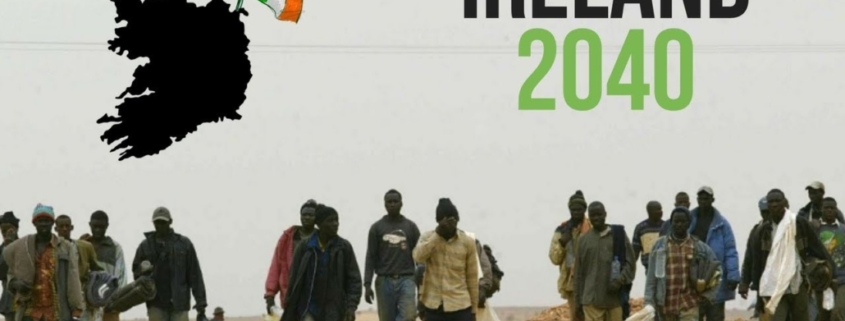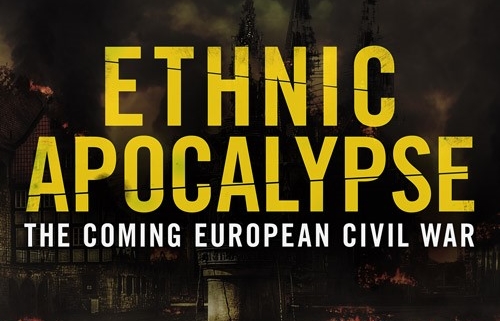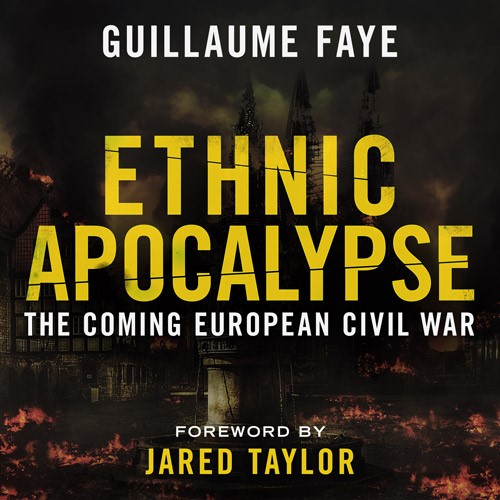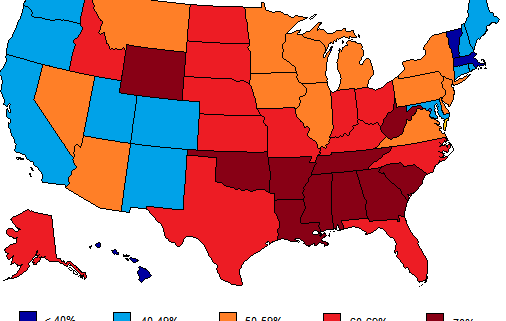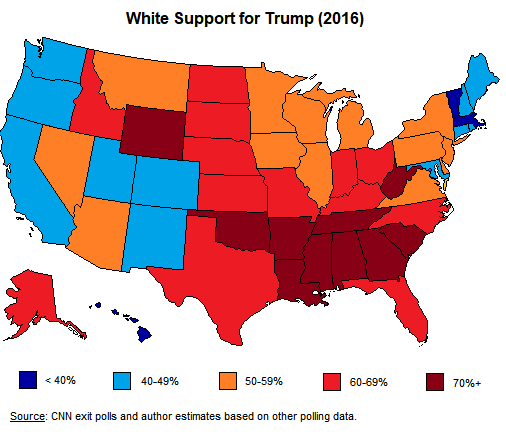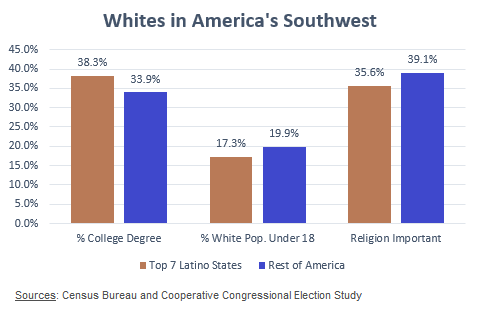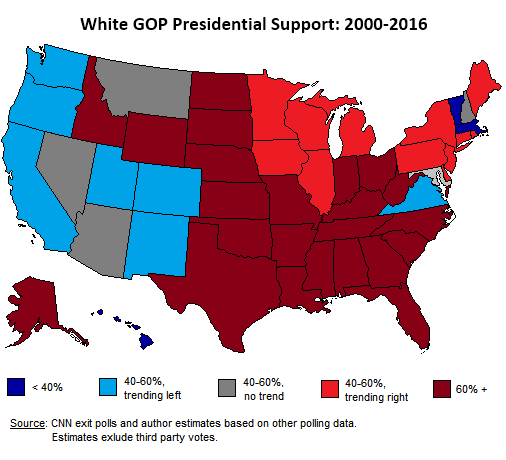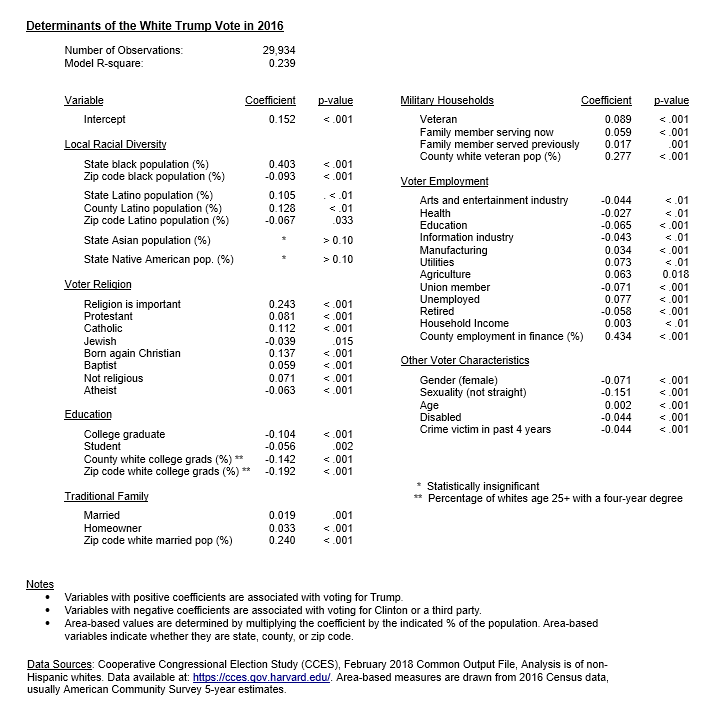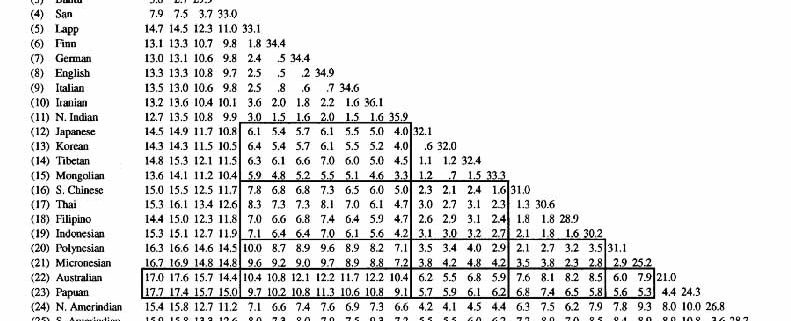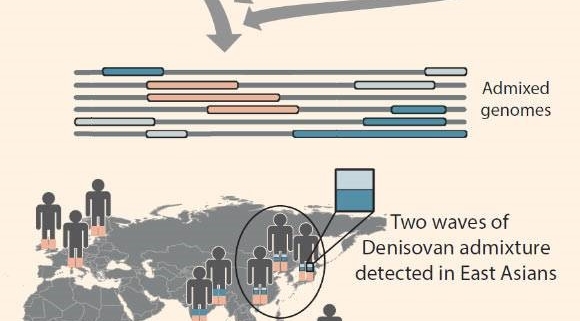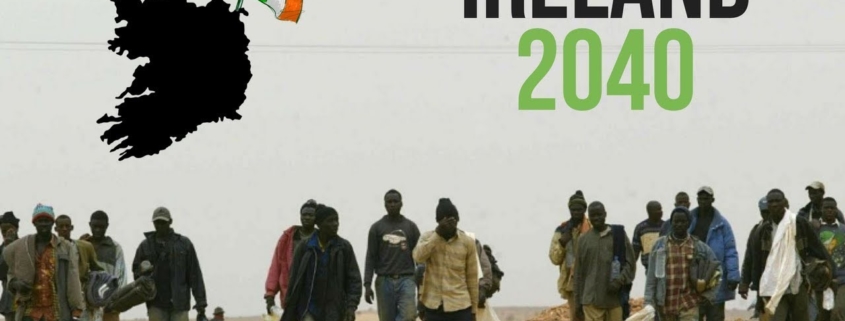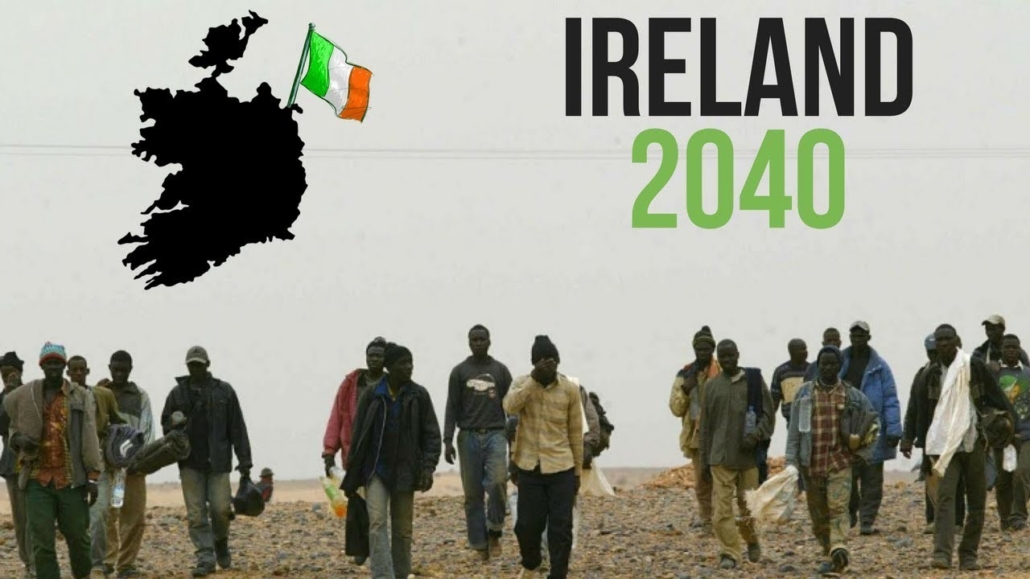“Dejar de ser Blanca”: Irlanda y el Activismo Radical Judío
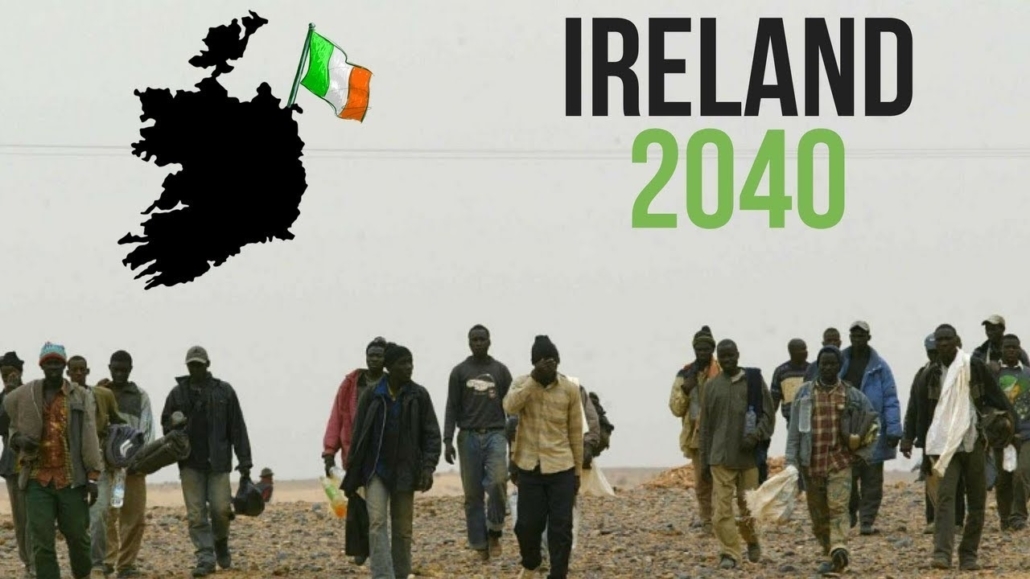
“Cinco judíos llegaron desde el mar con regalos para Tairdelbach [Rey de Munster], y fueron devueltos nuevamente al mar.”
Anales de Inisfallen, 1079 d. C.
“Propongo una interrogación sobre cómo la nación irlandesa puede dejar de ser blanca (cristiana y estable), privilegiando las voces de los racializados y subvirtiendo no sólo las políticas estatales de inmigración, sino también las de integración.”
Ronit Lentin (académica israelí), De estado racial a estado racista: Irlanda en vísperas del referéndum sobre ciudadanía, 2007.
Preludio
Tairdelbach de Munster (Turlough O´Brien, 1009-86), quien fue para el año 1079, efectivamente, el Alto Rey de Irlanda, probablemente mantiene el record de la expulsión de judíos más rápida en la historia. Él dominó la escena política irlandesa; había aplastado el liderazgo vikingo de Dublín y poseía “el estándar del Rey de los Sajones.” Su hijo incluso había comenzado a incursionar en Gales y la costa británica. Lamentablemente, dado que los Anales de Inisfallen son flojos en detalle, sólo podemos conjeturar los matices de la reacción del septuagenario, ante la improvista llegada de ese puñado de judíos con regalos. La delegación seguramente partió desde Normandía, donde los judíos prosperaban bajo una relación financiera de carácter simbiótico con Guillermo el Conquistador. Guillermo, por supuesto, había introducido judíos en la Inglaterra anglosajona 13 años antes del acercamiento a Tairdelbach, dejando abierta la posibilidad de que hayan podido viajar a Irlanda directamente desde uno de estos nuevos enclaves judíos en Inglaterra. De todas maneras, es casi certero que llegaron buscando permiso para asentarse en los centros urbanos de Irlanda, establecer una relación con la élite irlandesa (el mismo Tairdelbach), e incurrir en prácticas explotadoras de préstamo de dinero entre los órdenes sociales más bajos. Éste era un patrón que hasta el momento había sido atestiguado en toda Europa. Y sin embargo, la reacción de Tairdelbach fue rechazar los regalos y expulsar inmediatamente a los judíos. Éstos no serían capaces de formar ninguna comunidad en Irlanda por varios siglos.
Probablemente no sea ninguna coincidencia que Tairdelbach haya sido considerado como un Rey bueno y cristiano. Él mantuvo íntimas relaciones con la Iglesia Irlandesa y con la Iglesia de Inglaterra, y fue el patrón de un número de figuras religiosas y de académicos. Fue casi sin duda un hombre letrado y bien educado, y su decisión de expulsar a la delegación judía puede haber estado basada en un cuerpo de conocimiento, en vez de puro instinto. Historiadores Aidan Beatty y Dan O´Brien comentan sobre esta expulsión:
Nadie en Irlanda había visto una persona judía antes de este incidente; sin embargo, los visitantes son descriptos inequívocamente como “cinco judíos” (coicer Iudaide), y el pueblo irlandés ya tiene una palabra para los judíos, Iudaide, una palabra gaélica medieval que claramente tiene sus raíces en las lenguas de la antigüedad clásica. Pero además de esa paradoja, aquí también hay cierto tipo de conocimiento cultural en funcionamiento. Los irlandeses medievales que no le dieron cabida a estos visitantes judíos “saben” algo sobre los judíos, o mejor dicho, piensan algunas cosas sobre los judíos: ellos “saben” que los judíos no son dignos de confianza, que los judíos trayendo regalos no deben ser recibidos. Y los judíos no son aptos para residir en Irlanda – deben ser expulsados del país.[1]
La impresión es, por lo tanto, que Tairdelbach fue un líder avispado y generoso, quien buscó el bien de su pueblo en vez del bien de su propia situación financiera a corto plazo.
La venganza judía, directa o indirecta, ocurrió un siglo después, cuando se terminaron los días de gloria de los Altos Reyes Gaélicos como Tairdelbach, gracias a la invasión normanda de Irlanda por parte de Ricardo “Strongbow” [Arco Fuerte] de Clare. Así como la invasión normanda de Inglaterra, Strongbow fue financiado por judíos; en este caso, el financista asentado en Inglaterra Josce de Gloucester. Luego de la invasión normanda, la élite normanda llevó a Irlanda un pequeño grupo de judíos, principalmente para desarrollar actividades financieras en los puertos, en vez de establecer asentamientos a gran escala. Una concesión fechada el 28 de julio de 1232 por el Rey Enrique III, y destinada a Peter de Rivel, le concedió el puesto de tesorero y canciller del erario público de Irlanda, de los puertos y de la costa del rey, y también “la custodia del judaísmo del Rey en Irlanda.” Estos pocos judíos sin nombre habrían sido dispensados después de la expulsión de Inglaterra del año 1290, y los judíos permanecieron ausentes de Irlanda hasta la época de Cromwell, quien también ocupa un lugar de notoriedad en la historia irlandesa.
Al seguir detrás a los normandos y a los ingleses, los judíos se han ubicado ciertamente en una dudosa trayectoria con respecto a los irlandeses. Pero quizá nada de lo visto en el pasado pueda compararse con lo que se ve en el presente. Porque es el globalismo lo que ha invadido ahora a Irlanda, y activistas judíos están formando el pensamiento y las políticas de la nueva cultura globalista imperial.
Migración masiva y adoctrinamiento
Entre 2002 y 2016, la proporción de la población irlandesa nacida en el extranjero se elevó del 5.8% a más del 17%.[2] Dada la relativamente pequeña población de Irlanda, si el ritmo actual de inmigración persiste, los irlandeses se enfrentan a ser superados en su hogar ancestral en las décadas próximas. El mayor incremento llegó bajo la forma de un número creciente de paquistaníes, gitanos rumanos, afganos (un incremento del 212% en el censo previo), y sirios (un incremento del 199% en el censo previo). Irlanda además se ha convertido en el hogar de una gran y rápidamente creciente población africana, que fue descrita como estando sumida en “tasas de desempleo excepcionalmente altas,” por el académico de la University College Dublin, Philip O´Connel. La población africana le ha presentado algunas nuevas dificultades a la policía irlandesa, que ha tenido que romper una red africana occidental de fraude en Dublín y Meath, lidiar con bandas negras atacándose entre sí con machetes en el medio de calles transitadas, lidiar con las consecuencias de violaciones en grupo de niñas adolescentes por nigerianos en Kildare, soportar varios ataques a la policía por bandas narcotraficantes nigerianas, lidiar con un caso de violación y asesinato particularmente horrible, de una joven madre irlandesa, por un migrante nigeriano, e intentar controlar una banda africana llamada The Pesties, quienes “han estado aterrorizando a la gente prominentemente en el oeste y norte de Dublín, llevando a cabo atroces asaltos sobre repartidores y taxistas.”
Choferes de taxi africanos y musulmanes también han estado detrás de un gran y creciente número de violaciones y asaltos sexuales (por ejemplo, véase aquí, aquí, aquí, aquí, aquí, aquí, aquí y aquí). De hecho, las ofensas sexuales en Irlanda se han incrementado en un 17% sólo entre el 2017 y el 2018. En términos financieros, el creciente proceso de asilo le está costando al gobierno irlandés más de €1 billón cada cinco años, y en el medio de una crisis inmobiliaria irlandesa, la inmigración está ejerciendo una presión inmensa sobre cada aspecto de la infraestructura de la nación.
Curiosamente, los medios irlandeses no han estado haciendo mucho de este aspecto de la complexión cambiante de Irlanda. En vez de eso, mucho debate se ha llevado a cabo sobre el hecho de que Irlanda no tiene verdaderas leyes contra los “delitos de odio,” con la excepción del Acto de Prohibición de Incitación al Odio de 1989, que ha logrado efectuar un total de 5 condenas criminales en los últimos 30 años. El Dr. Ali Selim del Centro Cultural Islámico en Dublín, ha dicho que “hay una apremiante necesidad de una legislación contra el crimen de odio. Hoy en día tenemos un amplio rango de diversidad y creencias, y eso incrementa la necesidad de tener legislación contra el crimen de odio.” En cierta manera estoy de acuerdo con el Dr. Selim, ya que diversidad equivale inevitablemente a restricción de las libertades de la población nativa. Más migrantes significa más leyes para proteger esos migrantes del criticismo.
Pero a pesar de las intervenciones del Dr. Selim, el origen de las concepciones irlandesas de “racismo” y “discurso de odio” no se remonta a la creciente población musulmana, sino a un pequeño número de judíos influyentes.
En 1969, unos 890 años después de que Tairdelbach expulsara a la delegación normando-judía, una joven socióloga judía llegó a Irlanda desde Israel. Ronit Lentin, la socióloga en cuestión, fue profesora asociada de sociología en el Trinity College de Dublín hasta su retiro en el año 2014. Desde 1997 hasta 2012, Lentin fue Directora de Sociología, y actuó como directora del programa MPhil en “Raza, Etnicidad, Conflicto.” Fue también la fundadora de la Trinity Immigration Initiative, desde la cual abogó por una política de fronteras abiertas para Irlanda y se opuso a cualquier tipo de deportación, además de involucrarse en activismo para liberalizar las leyes irlandesas sobre el aborto.[3] Como académica y activista “anti-racista,” Lentin formuló las que habrían de convertirse en algunas de las facetas de auto-recriminación irlandesa en cuestiones de raza, empezando por su definición de Irlanda como “un estado biopolítico racista.”[4] Según ella misma, antes de empezar su trabajo de suministro de culpa racial irlandesa, a mediados de los 1990s, “la mayoría de la gente no era consciente de que el racismo irlandés existía.”[5]
En cierto sentido, entonces, Lentin introdujo el concepto de racismo irlandés. Su primer paso en asegurarles a los irlandeses que ciertamente eran racistas, fue negar su existencia como pueblo. Ella declaró que los irlandeses eran meramente “teorizados como homogéneos – blancos, cristianos y establecidos.”[6] Exactamente quién había desarrollado esta teoría sobre los irlandeses, y cuándo, nunca fue especificado por Lentin; tampoco intentó mostrar que el status de blancos, cristianos y establecidos, de la mayor parte de la población irlandesa, fuera otra cosa que una cuestión de hecho y realidad. Parece haberle sido suficiente simplemente con afirmar que lo irlandés era sólo una teoría, y dejarlo ahí. Lentin se sintió particularmente agraviada por el hecho de que los irlandeses, aparentemente inconscientes de que son solo un invento de su propia imaginación, hayan votado (80%) por vincular ciudadanía con sangre (terminando con la ciudadanía por nacimiento), constitucionalmente diferenciando entre ciudadano y no-ciudadano, en un Referéndum de Ciudadanía del año 2014. Esta medida fue llevada a cabo principalmente para parar el “turismo de maternidad” africano y los “bebes ancla” de mujeres africanas, que se han vuelto algo cada vez más común desde comienzos de los años 2000s. Para Lentin, sin embargo, la medida fue simbólica del hecho de que “la República Irlandesa se había vuelto consciente y democráticamente, un estado racista.”[7] Ella concluye que cualquier idea de los irlandeses como víctimas históricas debería ser descartada, y que “la nueva posición de Irlanda como líder en el Índice de Globalización, su símbolo de status como el núcleo de la cultura “cool,” y su posición privilegiada dentro de una Comunidad Europea en constante expansión, exige que se reteorice lo irlandés como supremacismo blanco.” [Énfasis agregado]
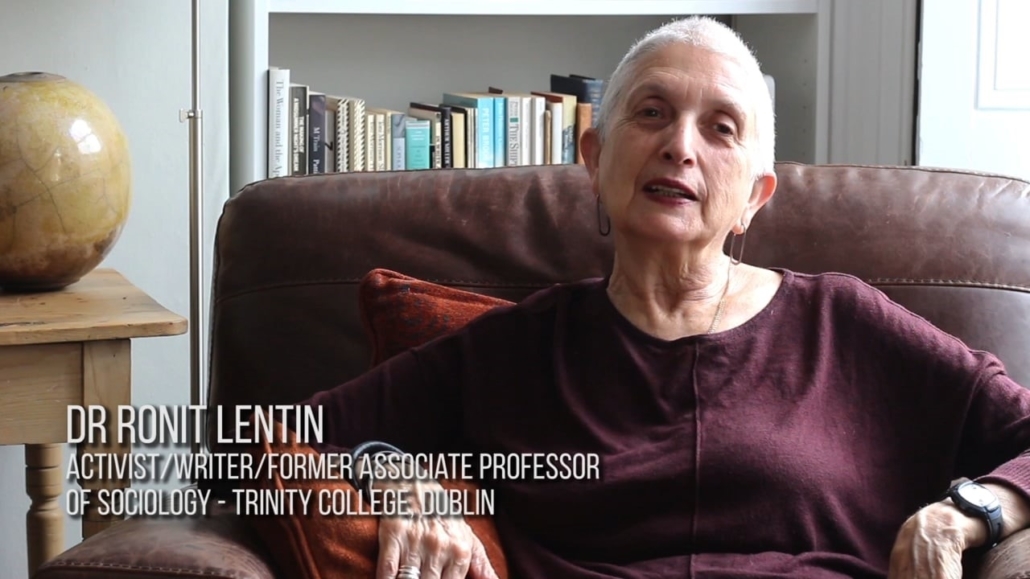
Entonces, en la concepción de Lentin, lo irlandés no sólo es una ficción, sino una ficción racista, supremacista blanca. El consejo de Lentin a los irlandeses, si acaso se quisieran deshacer del delirio de identidad étnica, es que se involucren en celebraciones masivas de “diversidad e integración y multiracialismo, y multiculturalismo e interculturalismo.”[9] Lentin agrega: “Yo propongo una interrogación sobre cómo la nación irlandesa puede dejar de ser blanca.”
Manteniendo la tradición familiar, Alana, la hija de Ronit Lentin, se mudó a Australia hace algunos años, donde rápidamente se estableció como una igualmente virulenta promotora de culpa blanca, y se involucró en sucesivas críticas al “racismo” australiano. Ella es ahora Presidenta de la Asociación de Teoría Crítica de la Raza y de Estudios sobre Blanquitud, y tiene artículos redactados para The Guardian, sosteniendo que la identidad australiana es tan ficticia como la irlandesa, y exigiendo que Australia adopte una política de fronteras abiertas, así también puede dejar de ser blanca.
Si el activismo de Ronit Lentin puede considerarse como sabotaje cultural, entonces el de su co-étnico Alan Shatter, podría ser considerado como nada menos que guerra legislativa. Shatter, un judío nacido en Irlanda, ha sido discutido previamente en The Occidental Observer, pero no desde 2013. El impacto de Shatter en Irlanda ha sido extraordinario, y es difícil de exagerar. Sus primeros objetivos en el gobierno fueron la debilitación de los controles legislativos que ayudaban a preservar la familia (vía el Acto de Reforma de Separación Judicial y de Ley Familiar de 1989), y la erosión gradual de la altamente conservadora ley irlandesa de anticonceptivos (escribiendo el panfleto satírico de 1979 Family Planning – Irish Style [Planificación Familiar – Estilo Irlandés], mostrando ilustraciones burlescas, diseñadas por su co-étnico, el artista Chaim Factor). Él ha sido también un estridente activista pro-aborto desde al menos el año 1983, y un muy temprano defensor del matrimonio homosexual y de la adopción de niños por homosexuales (él fue esencialmente el autor de los dos proyectos de ley). Shatter fue también central en la fundación de El Comité Oireachtas (Parlamentario) de Asuntos Exteriores; algo que él utilizo luego como un vehículo para perseguir objetivos favorables al Sionismo. En el 2013, The Times of Israel reportó que “Puede que Israel finalmente tenga algo de suerte con los irlandeses” porque “Israel no podría tener un irlandés más comprensivo y confiable que Shatter, un colaborador incondicional incluso en tiempos de controversia. Ocasionalmente combativo, él ha sido sumamente crítico de los estridentes criticismos a Israel, de parte de los gobiernos previos, y no ha retrocedido ante el abuso subsecuente.” El artículo se aseguró de celebrar el hecho de que Shatter goza de “una posición excepcionalmente influyente en el gobierno irlandés,” tanto como ministro de defensa, cuanto como ministro de justicia, y notó que “fue particularmente activo durante los años 1980s y 1990s, abogando por el divorcio y los derechos de planificación familiar. Su origen judío urbano parece haberlo puesto en ventaja, liberándolo del equipaje que pesaba sobre sus colegas católicos.”

Alan Shatter
Pero fue en sus esfuerzos en el campo de la inmigración que Shatter demostró verdadero fervor revolucionario. Entre 2011 y 2014, Shatter transformó totalmente el proceso de ciudadanía irlandesa, brindándoles ciudadanía irlandesa personalmente a 69.000 ciudadanos extranjeros. En Agosto del 2013, tomó medidas para expandir el proceso de asilo irlandés, citando la Guerra Civil Siria como la razón, pero más tarde reconociendo que el número más alto de aplicaciones de asilo en realidad provenía de nigerianos y paquistaníes. De hecho, Shatter se mostró tan interesado en aumentar el número de africanos ingresando a Irlanda, que la tasa de rechazo de aplicaciones de asilo africanas, bajó del 47% al 3%, apenas asumió su cargo. Fue tan celebrado en África que ganó el Africa World Man of the Year Award en 2012. Muchos de estos solicitantes de asilo, principalmente nigerianos, han comenzado a aterrorizar y a asaltar a sus anfitriones, mientras otros han sido vistos masturbándose públicamente dentro de sus taxis en hora pico, mientras esperaban a los clientes. En 2013, Shatter propuso un nuevo proyecto de ley, que les otorgaría amnistía a los miles de inmigrantes ilegales acumulándose en Irlanda. Y, en contraste con la realidad de la inmigración masiva – crimen, recursos forzados, y la descomposición del sentimiento de comunidad – Shatter anunció en 2014, que Irlanda debía hacer más para “denunciar y combatir el racismo y la intolerancia a él relacionada,” porque:
Esta migración reciente… ha tenido un impacto transformativo en la sociedad irlandesa – y, para mejor. Personas de origen no-irlandés están jugando un papel cada vez más importante en cada ámbito de la vida, no menos en deporte, y han mejorado enormemente el entramado social, cultural y económico de nuestra sociedad. Es importante que Irlanda continúe siendo una nación que acoja a aquellos que ya se han establecido aquí y a los que lo harán en el futuro. Es igualmente importante que nos adaptemos a la naturaleza cada vez más diversa de la sociedad irlandesa.
Cuando Shatter fue forzado a renunciar en mayo de 2014, luego de una controversia policial, fue el incompleto estado de sus reformas migratorias, lo que-le dijo a la prensa-, representó uno de sus mayores pesares. Le dijo a The Irish Times que una de sus “grandes frustraciones” al dejar el cargo, fue el no haber logrado publicar “una muy exhaustiva” legislación en relación a la inmigración, residencia y asilo, y les explicó que estaba “muy desilusionado” por el hecho de que su colega de partido y sucesor, el Ministro de Justicia Frances Fitzgerald, parecía tender hacía un proyecto de ley menos revolucionario. Agregó: Lamentablemente, el proyecto de ley que pensé iba a ver publicado al menos hace 18 meses, estaba en segundo plano, esperando ser tratado… Había además mucha presión para tratar de fragmentar esa legislación y lidiar sólo con la cuestión del asilo, y no con las tan importantes reformas requeridas en el área de inmigración. Estaba preocupado de que si tratábamos sólo la cuestión del asilo, no veríamos nunca el proyecto de ley integral que era necesario. [El proyecto revisado] no va a tratar las reformas integrales de inmigración que son tan terriblemente necesarias.
Aunque Shatter fue obligado a retirarse tempranamente, mucho daño ya había sido hecho, y su legado va a continuar.
Y como si Shatter y Lentin no fueran suficiente, Twitter hace poco estalló, gracias a la reciente aparición de Laura Weinstein, una doctora de Nueva York que ahora vive en Irlanda y afirma ser experta en historia y cultura irlandesa. De todos los aspectos de la historia y de la cultura irlandesa sobre los que podría haber elegido focalizarse, la Dra. Weinstein decidió que está más interesada, como Lentin, en el “mito” de una identidad irlandesa homogénea y en el “nacionalismo irlandés de derecha,” y parece que utiliza su cuenta de Twitter en gran medida, para trolear figuras políticas irlandesas que se oponen a la inmigración masiva. Hace ya varios días, por ejemplo, respondió a un post del Partido Nacional — que señalaba que el multiculturalismo esencialmente resulta en una crisis de identidad para todos en la sociedad —, implicando que la oposición de Irlanda a la inmigración dejaría a los irlandeses como “neuróticos” “perros” “consanguíneos.” Escribió: “El flujo de genes como resultado de la inmigración previene el impacto negativo de la endogamia. Pero sigan adelante, restrinjan la inmigración y el flujo genético, si quieren crear una raza de humanos que refleje el neuroticismo de los perros “de pura sangre.” Sólo asegúrense de organizar un referéndum sobre endogamia primero.”
Ahora bien, yo he vivido en Irlanda durante largos períodos de mi vida, y les he mostrado el país a amigos norteamericanos, alemanes, fineses, y sudafricanos. Todos se mostraron fascinados por el paisaje, la música, la antigua historia, y la comida, pero a diferencia de esta señora judía, no puedo recordar una sola instancia en la que alguno de ellos se haya mostrado preocupado en absoluto, por la homogeneidad genética de los irlandeses. Y no sólo es la fijación de Weinstein demasiado extraña y preocupante; es también fantástica. Estudios genéticos han demostrado que Irlanda posee un diverso acervo genético en forma de clústeres genéticos de origen escandinavo, normando-francés, británico e irlandés. Éste es, por supuesto, un acervo genético considerablemente más amplio que el de los judíos askenazis como Weinstein, cuya población total desciende de un solo grupo de 350 individuos.
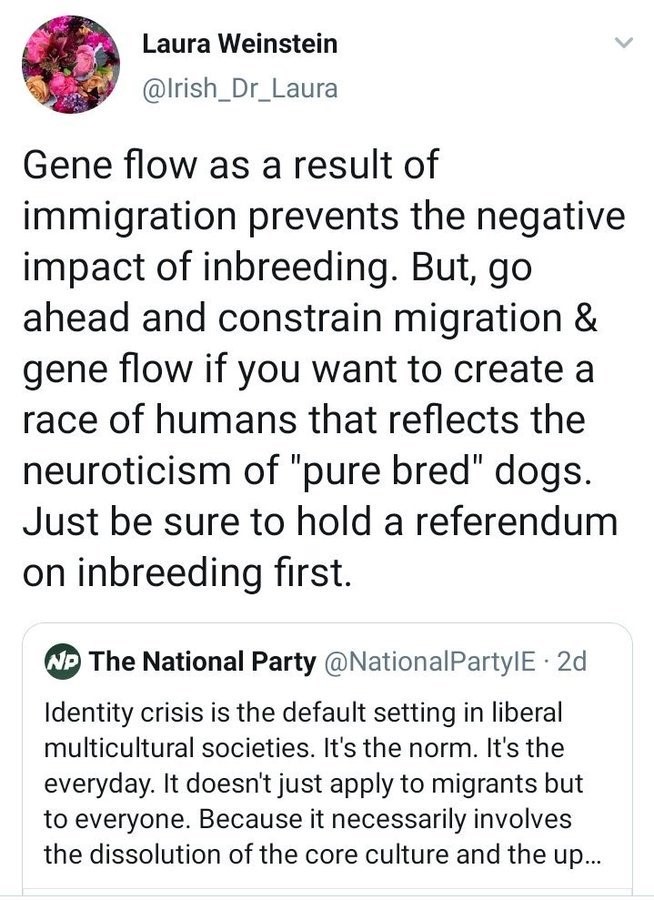
Obviamente, la Dra. Weinstein provocó una reacción robusta en Twitter por su respuesta al Partido Nacional, lo que a su vez la condujo a hacer la aún más extraordinaria afirmación de que “nadie ama a Irlanda más que yo.”
Podemos estar seguros de que Lentin y Shatter dirían lo mismo. Y quizás ellos realmente aman a Irlanda, pero no la Irlanda que fue y que ha sido por milenios, sino la Irlanda que está “transformándose” y que “ha de ser” — la Irlanda vencida por el globalismo, con una población internacional desprovista del “supremacismo blanco” de lo irlandés. Quizás ellos aman la Irlanda de los desfiles del orgullo gay y el árido hedor metálico de las clínicas de aborto. Quizás aman la Irlanda tocada por Nigeria, la Irlanda espolvoreada con mezquitas, donde jóvenes mamás blancas se ahorcan en desamparada desesperación, mientras los solicitantes de asilo son hospedados y alimentados a tan sólo unos metros de distancia.
Quizás ellos realmente sienten algún tipo de amor, y ven lo que han hecho y siguen haciendo, como si fuera traer regalos a Irlanda.
Pero la lección de Tairdelbach, de hace mil años, es que no tienes que aceptarlos.
[1] A. Beatty & D. O’Brien, Irish Questions and Jewish Questions: Crossovers in Culture (New York: Syracuse University Press, 2018), 1.
[2] S. Garner (2007). Ireland and immigration: explaining the absence of the far right. Patterns of Prejudice, 41(2) 109–130, 5.
[3] See Lentin, R. (2013). A Woman Died: Abortion and the Politics of Birth in Ireland. Feminist Review, 105(1), 130–136.
[4] R. Lentin, After Optimism? Ireland, Racism and Globalisation (Dublin: Metro Eireann Publications, 2006), 3.
[5] Ibid., 1.
[6] Ibid., 2.
[7] Ibid., 55.
[8] Ibid., 107.
[9] Ibid., 165.

